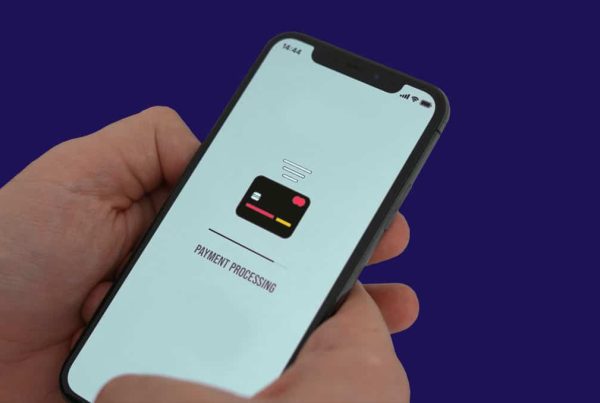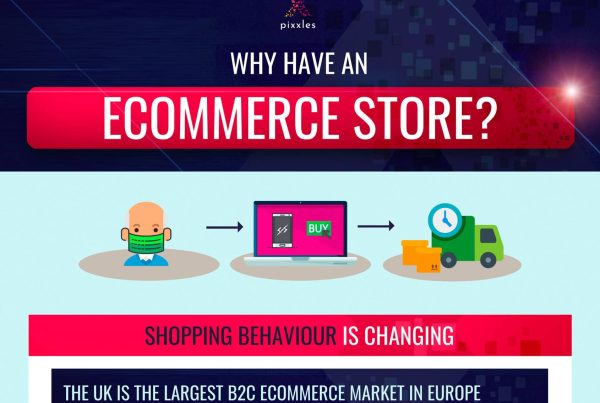You’ve probably at some point looked at your bank account and noticed an unusual, low dollar charge amount (maybe $1 to $5) that appeared temporarily before vanishing.
This was most likely a pre-authorisation charge, also known as a pre-auth, which is a temporary hold placed on a credit card to ensure that the account holder has enough funds to cover a future purchase or payment.
Pre-Authorisation Holds vs Administrative Holds
Unlike pre-authorisation holds, which are used to ensure customers have enough money to pay their bills, administrative holds are used by credit card companies when there is suspected fraudulent activity on an account, a dispute over a transaction, or an overdue payment.
Additionally, administrative holds are used when someone exceeds their credit limit so that the person can pay their balance.
When an administrative hold is placed on a credit card account, the cardholder may not be able to use the card for new purchases, cash advances, or balance transfers.
However, any recurring charges, such as subscription fees or utility bills, may still be processed.
Why Is There A Pre-Authorisation Charge?
Now that we understand the difference between pre-authorisations and administrative holds, let’s look at why pre-authorisations are used.
Pre-authorisations (i.e., pre-auths) are an important tool that allows clients to pay for goods and services when the transaction amount hasn’t been determined.
A real-world example of this is tipping at a restaurant. You don’t tip until after you’ve paid the bill, yet the restaurant doesn’t know how much your tip will be.
So, why do restaurants only need to perform one transaction rather than re-run your card after you’ve added a tip?
Pre-Authorisation Settlement
The answer is that pre-auths allow merchants to guess the total charge amount and place a hold on an estimated amount of funds until the pre-authorisation settlement is complete.
A pre-authorisation settlement just means that the held funds have been successfully deposited into the merchant’s account.
Please note that every merchant must submit their pre-authorisation transactions for settlement within a limited time window (usually five days) to avoid chargebacks.
Pending Charge On A Credit Card Statement
Buyers should notice a “pending charge” on their credit card statement after receiving a pre-authorisation charge.
This notice is used by credit card processing companies to let you know your funds on hold can’t be spent elsewhere. This doesn’t mean, however, that the funds have been debited.
Pre-authorised funds aren’t charged until a certain product has been delivered or the service fulfilled.
Can You Have an Authorisation Hold On A Debit Card?
Yes, authorisation holds also apply to debit cards.
A debit card can either be run as a credit transaction with no PIN number or as a debit transaction with a PIN.
Debit cards are run as credit transactions if the card is part of a credit card network like Visa.
Your Account Balance
Keep in mind that authorisation holds on a debit card will affect the available balance in your account, even though the funds are not yet fully debited.
It’s important to keep track of any authorisation holds on your account so you don’t accidentally overdraw it.
When Are Pre-Authorisations Most Often Used?
Not every business needs pre-authorisations, but pre-auths are very important and useful in the hospitality industry, as well as a handful of other sectors.
Hotel Pre-Auths
Hotels use pre-authorisation payments as a means of safeguarding themselves against charges that may be incurred while guests are staying in the hotel—room service fees being one example.
Upon check-in, practically all hotels place a pre-authorisation charge on a guest’s credit card, then settle the charge once the guest checks out.
Gas Station Pre-Auths
Here’s an interesting fact: Even gas stations use pre-authorisation holds. This is primarily done to prevent fraud.
The hold amount can range from $1 to $100 or more, depending on the card issuer and the gas station’s policies.
Once a customer has finished pumping gas and the actual purchase amount is determined, the gas station will finalize the transaction, and the pre-authorisation hold will be removed.
Gas stations set their own pre-authorisation amounts, although it’s the issuing bank that determines the hold time—usually 72 hours.
Ecommerce Pre-Auths
Pre-authorisations are commonly used in the ecommerce arena to help manage inventory and to increase customer satisfaction after the delivery of a product.
Why Have A $1 Pre-Authorisation Hold?
A $1 pre-authorisation hold is often used by merchants to verify that a customer’s credit card or debit card is valid and has sufficient funds.
Gas stations typically require a small $1 hold from customers as standard practice.
$1 holds are also sometimes used by businesses to validate a customer’s card information when it has been updated.
How Long Does A Pre-Authorisation Hold Last?
How long a pre-authorisation hold lasts varies depending on the policies of the merchant, the payment processor, and the card issuer.
With that said, pre-authorisations typically expire five days after being run. In some cases, the pre-authorisation will take longer. The length of time depends on your MCC (merchant classification code).
What If Your Pre-Authorisation Expires?
If your pre-authorisation expires, it means that the authorisation for a certain transaction or service has lapsed, and you may need to go through the process again.
Restarting the authorisation process is doable since no funds were charged to the customer’s card. The only disadvantage is that you’ll wait to have a few more days for the charge to go through.
Note to customers: If your pre-authorisation has expired but you still need the transaction to go through to receive an important product or service, you’ll have to contact the vendor or service provider to request a new pre-authorisation.
You may be required to provide updated payment or insurance information before a new authorisation is issued.
It’s important to note that some vendors or service providers may have policies in place that do not allow for pre-authorisation renewals or extensions.
Can I Cancel A Pre-Authorised Payment?
To stop a pre-authorised payment, you need to contact your bank three business days before the scheduled transfer date.
You’ll likely need to give your bank verbal confirmation after verifying your identity. In some cases, a written request may be required.
We also suggest contacting the merchant and asking them to cancel your charge in addition to revoking their authorisation to charge you.
If the merchant keeps charging you after you’ve revoked their authorisation, you’ll have to work with your bank to dispute the charges.
Can A Bank Remove A Pre-Authorisation?
If the merchant’s acquirer allows for authorisation reversal, then yes, the pre-authorisation can be removed.
Does Freezing Your Card Stop Pending Transactions?
No.
Payments that have been authorised before the freeze will go through.
If you can’t stop a pending credit card transaction, your best bet is to make a return, assuming your merchant will accept it.
In the event you have a pending transaction that appears fraudulent, you can request a chargeback from the credit card company.
The Benefits of Pre-Authorisation
Pre-authorisations protect businesses from fraudulent card use, chargebacks, and fines.
Regarding chargebacks: These occur when a customer disputes a charge and requests a refund directly from their bank or credit card issuer.
Chargebacks are costly to businesses, and they often result in fees and lost revenue.
Reducing chargebacks is critical to the success of your business, as too many chargebacks can lead to non-compliance with PCI-DSS, as well as hefty fines.
If a merchant has too many chargebacks, they can in extreme cases even lose their ability to process payments online!
As you can imagine, this is a situation that every business owner must avoid.
Managing Your Inventory
As noted earlier, pre-authorisations are frequently used by ecommerce stores to help manage inventory.
Pre-authorised payments give you time to ensure you have enough inventory to meet the orders you receive.
Avoid Interchange Fees and Most Refund Fees
Pre-authorisations keep businesses from having to pay interchange fees on canceled transactions.
Likewise, pre-auths get rid of most refund fees, which can be incurred if a merchant is not able to fulfill an order or a service for whatever reason.
Since a customer’s funds are not withdrawn until the transaction has been confirmed, all a merchant has to do is cancel the pre-authorisation.
Downsides to Pre-Authorisation
There are some downsides to pre-authorisations that one should be aware of.
One of them is that pre-authorisations expire after a 5-day period, so it’s possible that reserved funds could get released before a transaction completes.
For this reason, merchants have to stay accountable and reattempt pre-authorisations as necessary.
Naturally, this can be time-consuming, both for merchants and customers, especially if multiple authorisation attempts are required to complete a transaction.
Holding A Customer’s Money When They Need It
Another big problem with pre-authorisations is that they put a hold on a customer’s money, which they might need to use. Unexpected events can occur, and if a customer is barred from those funds, it can lead to frustration and other problems.
Finally, if a pre-authorisation amount is different from the final charge amount, this can confuse customers who may not be aware of the discrepancy. This last issue can be resolved by explaining to the customer how pre-auths work and giving them an idea of what to expect.
Pre-Authorisation Settlements Best Practices
It really is important to reiterate to your customers how long they can expect to wait while their funds are on hold so they can plan their finances accordingly.
If you run an ecommerce store, it’s a very good idea to update your website or app to notify customers of your pre-authorisation policy. This may involve updating your terms of service or adding a notification to your checkout page.
Be upfront about your policy and explain what it is from the beginning. Definitely don’t wait to explain it after the fact. This will help your business in the long run.
Your Billing Descriptor
Perfecting your billing descriptor is another step you should take. It may seem like a small one, but it’s quite important.
You want customers to see who is charging them on their credit card statements and have a number available for them to call.
Setting Up Pre-Authorisation
To process pre-authorisations online, you’ll have to set up a compatible payment gateway and configure it to support pre-authorisation charges.
This may involve contacting your payment gateway provider and requesting that necessary changes be made to your account.
When a customer makes a purchase, it’s your payment gateway that will receive your pre-authorisation request.
Ecommerce store owners will also want to have a shopping cart that supports pre-authorisations.
About Pixxles
Pixxles is a customer-focused card payment processor that is authorised by the Financial Conduct Authority.
We make payments fast and easy by cutting out unnecessary third parties and being directly accountable to customers and the Regulator.
To ensure we provide you with the service you need, we take the time to understand your business.
One of our primary goals is to shield your business from fraud, fines, and other related problems, so that you can focus on what’s most important —building customer
relationships, making sales, and ultimately growing your business.








